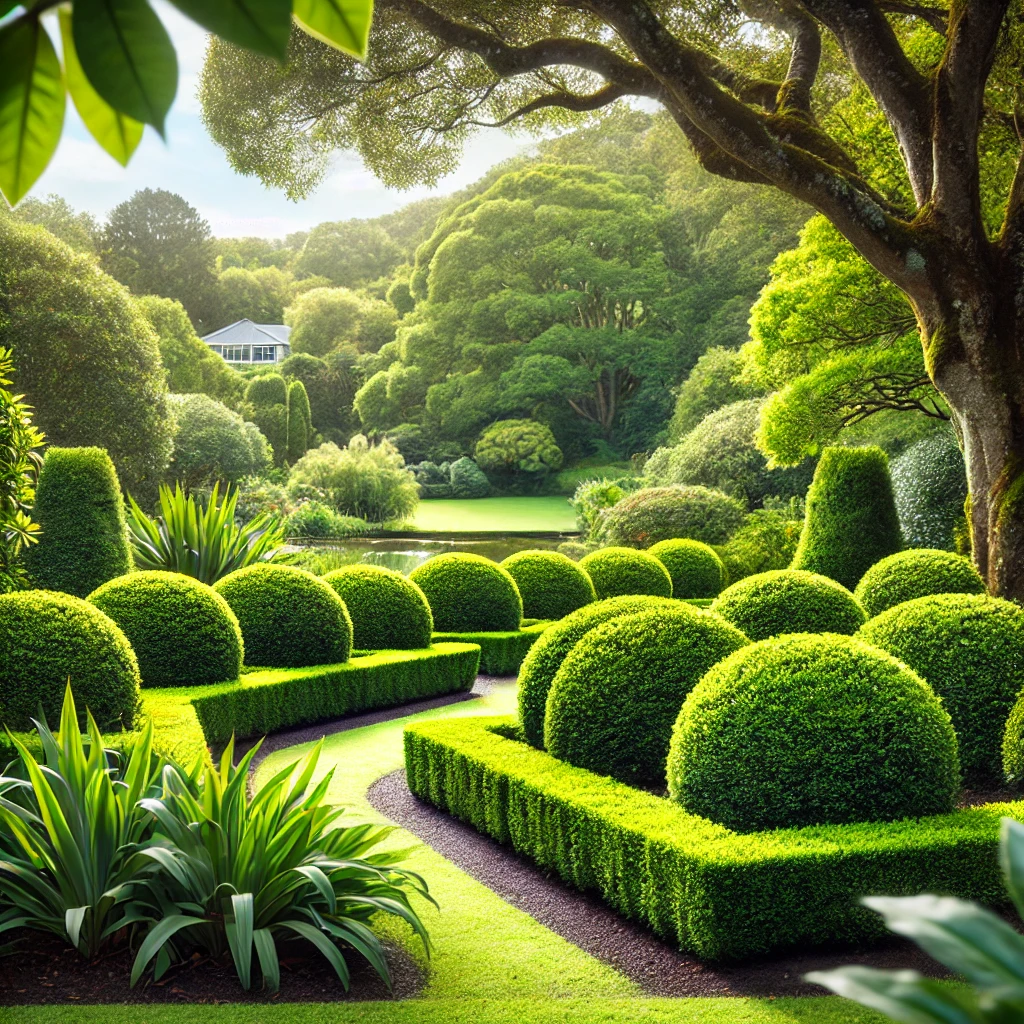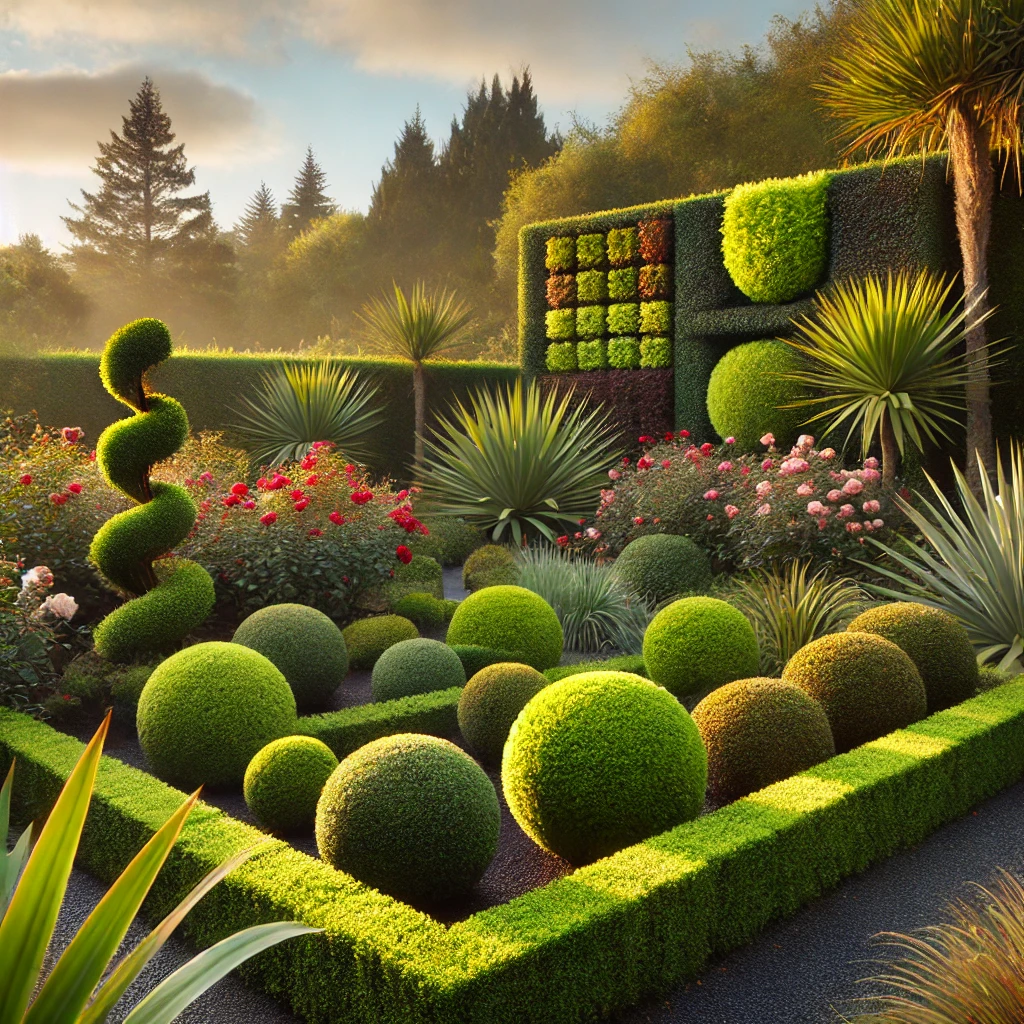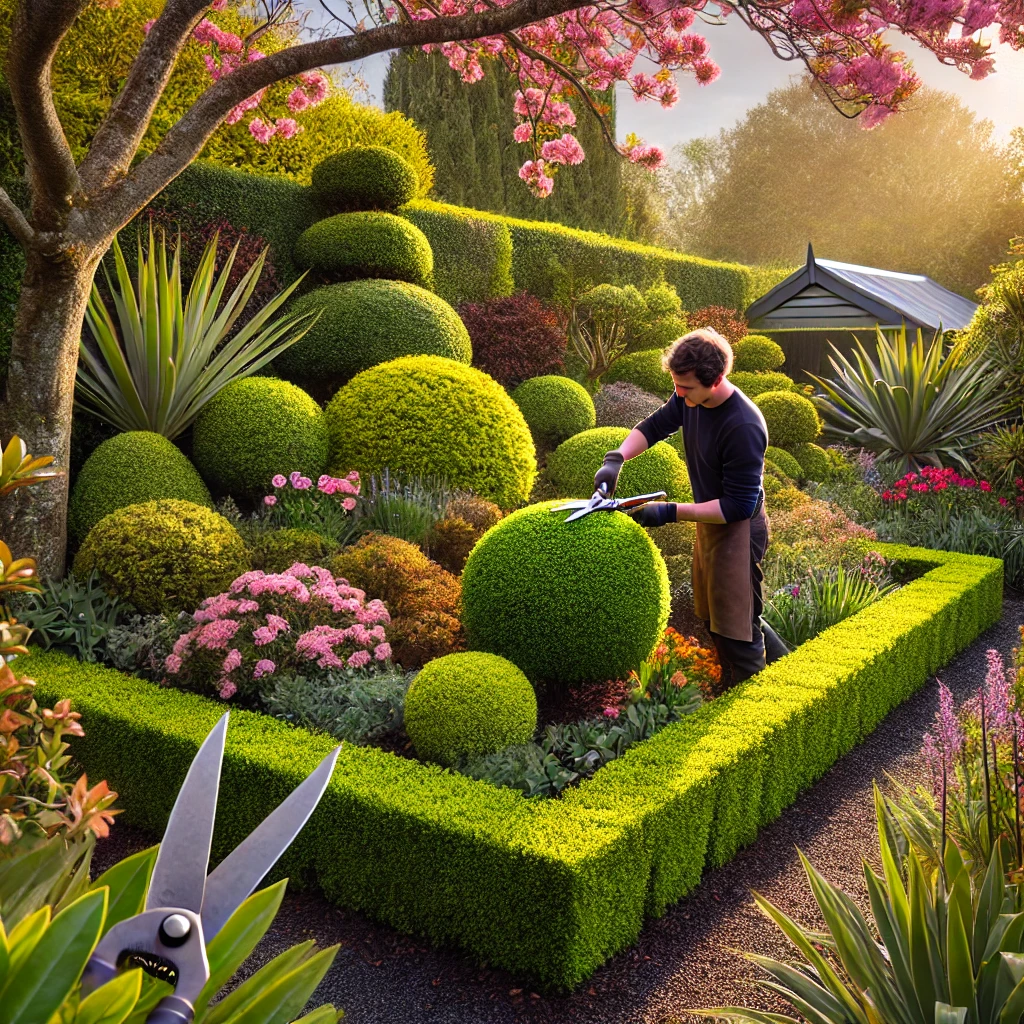The Best Buxus For Sale Auckland Has On Offer – Come Get Some
Buxus For The Win – How To Choose The Right Buxus For Sale In Auckland
If ever you have taken an amble through a nicely manicured lawn and admired neat, straight lines of a well-cut hedge, you must have encountered Buxus. This tiny yet sturdy shrub has become dear to many a heart over years in many a formal garden and fresh landscapes alike.
Its evergreen, dense foliage makes it a standby when it comes to decorating outdoor spaces with grace. But since a lot of them are in the market, how would you know which Buxus for sale Auckland is right? Be it for creating a formal border or a rich, low-maintenance hedge, the proper variety is important.

For centuries, Buxus has graced the gardens of palaces, public spaces, and suburban homes alike. That’s partly due to its capability to be shaped into almost any form you can dream of-from traditional boxy hedges to intricate topiary.
Not all Buxus is created equal. With so many different varieties to choose from, you really have to make sure you get the right type that will thrive in your exact conditions-particularly here in New Zealand’s climate. You do not want to plant the wrong variety only to watch a hedge struggle for its life.
When you contemplate a Buxus for sale in Auckland, the first thing you need to think about is the environment.
While Buxus is generally quite hardy, some varieties are more suited to the specific conditions in Auckland. The humid summers and mild winters of the city provide an ideal climate for most varieties of Buxus. You still need to take into consideration the specific placement in your garden.
If you are planting in a spot that receives all-day full sun, you will have to choose one that tolerates the heat without affecting its quality. However, if your hedge is to be located in a more shaded area, you have to look for one that will thrive in low light conditions. One of the most common varieties for buxus hedging NZ is Buxus sempervirens.
Also sometimes referred to as English Box, this classic variety bears small, dense leaves and has slow, manageable growth. Great for formal hedges, borders, and topiary, as it holds its shape with light pruning.
Buxus sempervirens does particularly well in Auckland’s temperate climate, offering greens all year round without fuss. However, care must be taken to ensure the soil is not too soggy, as Buxus does not like soggy feet. If your garden happens to be on the side of water retention, you may want to plant your Buxus in raised beds or create better drainage by adding compost.
Another great option when finding Buxus for sale in Auckland is Buxus microphylla, commonly referred to as Japanese Box.
It is similar to English Box, only a little faster-growing, and particularly suited to New Zealand’s climate. It is finer for hedging, especially if you are after a less formal look, with its bright green foliage and compact growth. Buxus microphylla is also more resistant to humidity and pests, which, during the steamy summer in Auckland, is many a hedge enthusiast’s lifesaver.
If you’re one of those people who like a hedge that looks good with only a little effort involved, then this might be the Buxus for you. Choosing the right Buxus isn’t just about picking one that looks good, it’s about considering the long-term maintenance.
While buxus is generally low maintenance, some varieties need a little more TLC than others. If you’re a hands-off kind of gardener, choose one of the slower growers such as Buxus sempervirens.
You’ll spend less time pruning and more time enjoying the greenery. Contrarily, in case you take a lot of pleasure in occasional pruning and want your hedge to grow big in the shortest time possible, perhaps Buxus microphylla would suit you better because it grows faster. One of the biggest questions you may consider is, in fact, how many Buxus plants you do require for that hedge.
Spacing is a very critical consideration when it comes to planning your buxus hedging NZ project.
They should be set next to each other to make up a hedge, but not too close to each other that they start competing for the intake of food and sunlight. For spacing among the Buxus plants, one great rule of thumb has to do with setting spacing about 20 to 30 centimeters-apart to accommodate leaf growth and equally allow knitting into that seamless, classic hedge.
If you want instantaneous effect, you can always plant them closer, but then be prepared to prune more often to keep that clean line. Of course, it is not just about aesthetics, as finding the right Buxus for a garden also means selecting a certain cultivar that will suit one’s lifestyle. If you are an outdoorsy person and do not mind a little maintenance in your hedge, then you can pick any variety of Buxus.
But if you want a low-maintenance garden that looks immaculate without fuss, then selecting a slow-growing and hardy type such as Buxus sempervirens will suffice. When planting, remember that this is not only about selecting the best Buxus hedge but also making sure it gets the right care conditions to thrive well.
Plant them in a spot with well-draining soil, water attentively through the dry spells in Auckland, and give your hedge a light prune a few times a year to keep it at its best.
Again, the best thing is that it does not have to be a complex job when trying to find the perfect Buxus on sale in Auckland. Knowing a little about the different varieties and understanding the conditions in your garden will allow you to pick just the right Buxus for that hedge of your dreams.
Whether you are going for sleek and formal, or a bit more relaxed, there is a buxus variety to suit your style and really thrive in the Auckland climate. Once you have planted your buxus, you will have a beautiful display of their low-maintenance hedge, adding structure and elegance to your garden year after year.
Buxus Hedges in Kiwi Landscapes: Merging Tradition with Innovation
In New Zealand, where natural beauty abounds, gardens often reflect a balance of tradition and modernity. Among the plants that have stood the test of time in Kiwi landscapes, Buxus hedges hold a special place.

These versatile evergreens have long been cherished for their ability to add structure, elegance, and charm to gardens. But what’s truly fascinating is how gardeners across the country are reimagining their use, blending traditional practices with innovative designs to create outdoor spaces that are both timeless and fresh.
When I first moved into my home, I was drawn to the idea of incorporating Buxus hedges into my garden. I had always admired the classic look of neatly trimmed Buxus borders, which evoke the grandeur of historic European gardens.
At the same time, I wanted something uniquely “Kiwi,” something that would reflect New Zealand’s contemporary flair and relaxed lifestyle. What I’ve discovered since is that Buxus is a plant with endless potential, capable of adapting to almost any vision.
Traditionally, Buxus hedges have been used to create clean lines and formal designs. Their compact growth habit and small, glossy leaves make them ideal for intricate shapes and borders.
Many historic gardens in New Zealand still showcase Buxus in classic patterns, framing pathways and garden beds with precision. These traditional layouts remain popular because they provide structure and symmetry, grounding even the most whimsical gardens in a sense of order.
In my own garden, I started with a traditional Buxus border around a rose bed, and the result was stunning. The hedge’s deep green foliage highlighted the vibrant blooms while keeping the area neat and defined.
Over time, however, I began experimenting with more contemporary uses of Buxus, inspired by gardens I had visited that embraced innovation without losing the hedge’s classic appeal.
One of the most exciting trends in New Zealand gardening is the use of Buxus in creative, modern designs. I recently visited a friend’s urban courtyard where Buxus spheres were scattered among paving stones and native grasses.
The combination of formal shapes with natural textures created a dynamic and playful atmosphere. Inspired by this, I started shaping some of my Buxus plants into free-standing globes, placing them in areas where they could act as focal points rather than simply boundaries.
Another innovative use of Buxus I’ve seen is as a vertical feature. In a garden near Wellington, the homeowners trained Buxus onto a metal frame to create a living wall. This approach not only maximized space in their compact garden but also added a lush, green backdrop to their outdoor seating area.
Taking inspiration from this, I’ve begun experimenting with using Buxus to create low privacy screens in my own backyard, and I love how versatile the plant has proven to be.
New Zealand’s climate is particularly well-suited to growing Buxus, but it’s not without its challenges. The infamous Buxus blight has caused concern among gardeners in recent years.
I had a scare with blight on one of my hedges, and while it was disheartening, I discovered that careful care and preventative measures could mitigate the risk. Ensuring good airflow around the plants, avoiding overhead watering, and using resistant Buxus varieties have all helped me maintain healthy, vibrant hedges.
Incorporating native plants alongside Buxus is another way Kiwi gardeners are adding a local touch to their designs. In one garden I visited, the combination of traditional Buxus hedging with native flaxes and ferns created a stunning blend of old-world elegance and New Zealand’s unique flora.
I’ve started doing the same in my garden, planting flaxes behind my Buxus borders for height and texture. The result is a garden that feels distinctly connected to its surroundings while still honoring the timeless charm of the hedge.
What I’ve come to appreciate most about Buxus hedges is their ability to evolve with your garden. They’re like a blank canvas, ready to be shaped and adapted as your tastes and needs change. Whether you’re aiming for a formal, symmetrical look or a more relaxed, eclectic design, Buxus provides the foundation upon which you can build.
Incorporating Buxus into your garden doesn’t require grand gestures or expert skills. I’ve found that starting small, with a single hedge or a few potted plants, is a great way to explore the possibilities. Over time, as you gain confidence, you can experiment with different shapes, layouts, and combinations to create a garden that’s uniquely your own.
In Kiwi landscapes, where tradition and innovation often go hand in hand, Buxus hedges have found a home that allows them to thrive in both roles. They honor the elegance of classic garden design while offering endless opportunities for creativity and personalization. For me, they’ve become an essential part of my garden, a constant reminder that beauty can be both timeless and ever-changing.
Whether you’re a seasoned gardener or just beginning your journey, Buxus hedges offer a world of possibilities. With a little care, imagination, and inspiration, they can transform any outdoor space into something truly special. In New Zealand, where the natural landscape is already so breathtaking, adding a touch of Buxus is like framing a masterpiece, enhancing its beauty without overshadowing it.
Seasonal Beauty: Maintaining the Year-Round Appeal of Buxus Hedges in New Zealand
Buxus hedges hold a special place in New Zealand gardens, admired for their timeless elegance and ability to provide structure and beauty throughout the year. However, ensuring that these hedges remain lush and attractive across New Zealand’s changing seasons requires attention to seasonal care.

From dealing with humid summers to protecting against winter chills, understanding the unique needs of Buxus in each season is key to maintaining their year-round appeal.
When I first planted Buxus hedges along my garden pathway, I was captivated by their neat, glossy foliage and the way they transformed the space.
But as the seasons shifted, I noticed that they required more than just an occasional trim to keep their vibrant charm. It didn’t take long for me to learn that proper seasonal care could mean the difference between a hedge that thrives and one that struggles.
In New Zealand’s spring, when gardens come to life, Buxus hedges often experience a burst of new growth. This is the perfect time to give your hedges a light trim to encourage bushier, more even growth.
I like to use sharp, clean shears for a crisp finish, taking care not to cut back too hard, as this can stress the plants. Spring is also an ideal time to feed your hedges with a slow-release fertilizer. I’ve found that a balanced blend designed for evergreens provides the nutrients my Buxus needs to support healthy growth as the weather warms.
As summer arrives, the combination of heat and humidity in some parts of New Zealand can create challenges for Buxus hedges. Regular watering becomes essential, especially during dry spells. I make sure to water deeply but infrequently, allowing the soil to dry out slightly between waterings to prevent root rot.
Mulching around the base of the hedge helps retain moisture while keeping the roots cool. In my garden, this simple step has made a noticeable difference, especially during particularly hot summers.
Summer is also the time to watch for pests and diseases, which can thrive in the warm, humid conditions. Buxus blight is a concern in New Zealand, and I’ve learned to spot the early signs, such as brown patches or leaf drop.
Ensuring good airflow around the plants by thinning out dense areas during pruning has been my first line of defense. If an issue arises, I treat it quickly with an appropriate fungicide for buxus hedges and remove any affected foliage to prevent further spread.
Autumn in New Zealand is a time of transition, and it’s important to prepare your Buxus hedges for the cooler months ahead. I like to give mine a final trim in late autumn to tidy up any uneven growth and ensure they enter winter looking their best.
This is also the time to apply a layer of organic mulch if it has thinned out over the summer. Mulch not only insulates the roots against cooler temperatures but also enriches the soil as it breaks down.
Winter care for Buxus hedges in New Zealand is all about protection and maintenance. While Buxus is hardy, extreme cold or frost can cause damage, particularly to young plants. I’ve found that a layer of frost cloth can be helpful for hedges in particularly exposed areas.
Avoid heavy pruning during this time, as the plants are dormant and need their foliage for energy. Instead, I focus on clearing away any fallen leaves or debris that could harbor pests or diseases.
One of the things I love most about Buxus is how it continues to add structure and greenery to my garden, even in the depths of winter. While other plants lose their leaves or fade into the background, my Buxus hedges remain a vibrant green, creating a sense of order and calm that carries the garden through until spring.
As the seasons change, one of the most rewarding aspects of caring for Buxus hedges is seeing how they adapt and thrive under proper care. Each season brings its own challenges and opportunities, but with a little effort and attention, these hedges can remain a stunning feature of your garden all year round.
For me, maintaining my Buxus has become a ritual, a way of staying connected to the rhythm of the seasons and the beauty of the natural world.
Whether you’re trimming back in spring, protecting against pests in summer, or preparing for winter’s chill, the key is to understand what your hedges need at each stage of the year. With the right care, Buxus hedges can continue to provide structure, beauty, and elegance to your garden, no matter the season.
In New Zealand, where the climate varies widely from region to region, adapting your approach to suit local conditions is especially important.
From the warm, humid north to the cooler, drier south, the principles of Buxus care remain the same, but small adjustments can make a big difference. For me, the joy of seeing my hedges thrive throughout the year is well worth the effort, and I can’t imagine my garden without them.
Buxus hedges are more than just a practical choice—they’re a living, evolving part of the garden, offering endless opportunities for creativity and connection. With proper care and a little attention to the changing seasons, they can remain the green backbone of your outdoor space for years to come.
